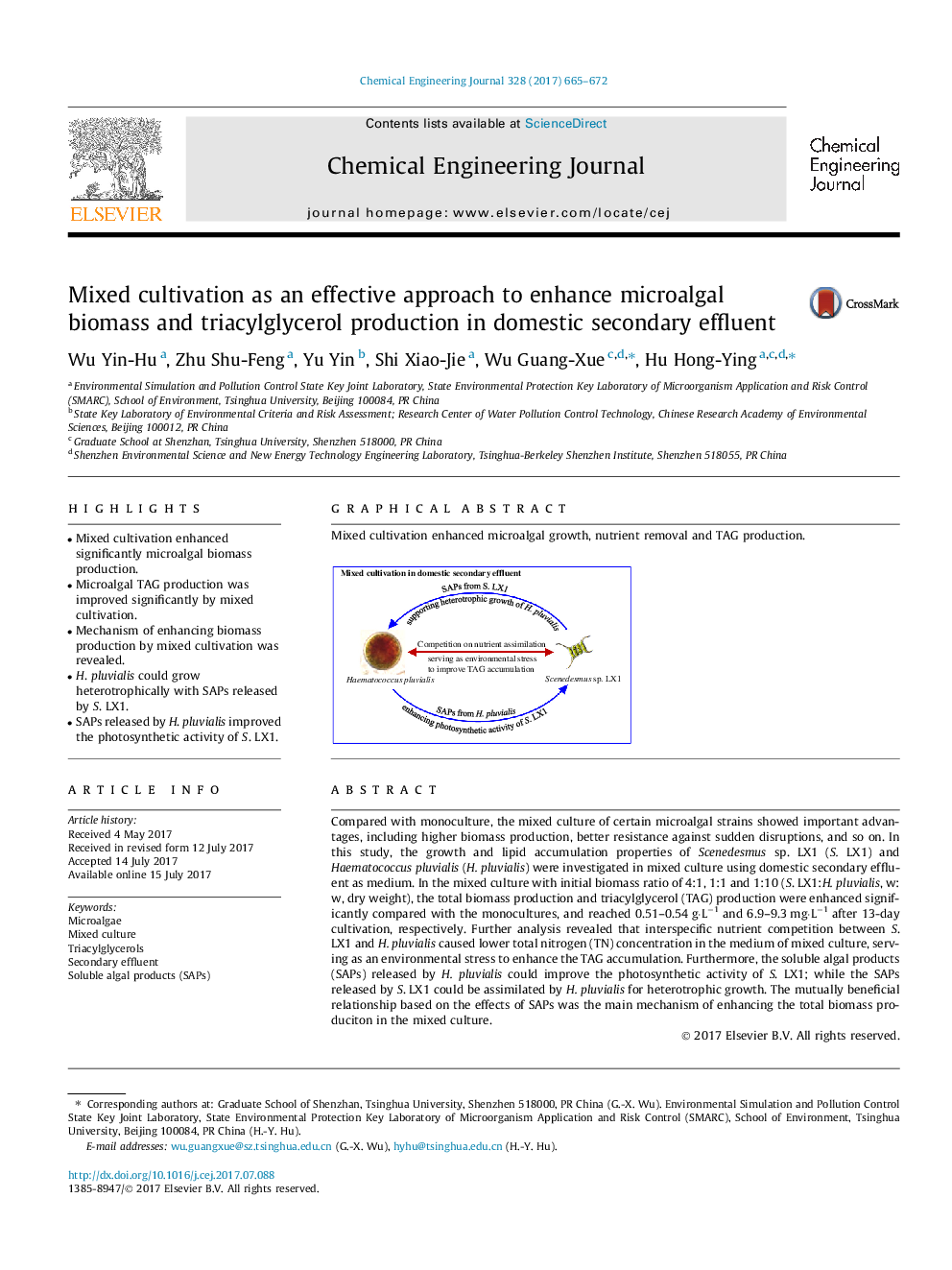| Article ID | Journal | Published Year | Pages | File Type |
|---|---|---|---|---|
| 6465274 | Chemical Engineering Journal | 2017 | 8 Pages |
â¢Mixed cultivation enhanced significantly microalgal biomass production.â¢Microalgal TAG production was improved significantly by mixed cultivation.â¢Mechanism of enhancing biomass production by mixed cultivation was revealed.â¢H. pluvialis could grow heterotrophically with SAPs released by S. LX1.â¢SAPs released by H. pluvialis improved the photosynthetic activity of S. LX1.
Compared with monoculture, the mixed culture of certain microalgal strains showed important advantages, including higher biomass production, better resistance against sudden disruptions, and so on. In this study, the growth and lipid accumulation properties of Scenedesmus sp. LX1 (S. LX1) and Haematococcus pluvialis (H. pluvialis) were investigated in mixed culture using domestic secondary effluent as medium. In the mixed culture with initial biomass ratio of 4:1, 1:1 and 1:10 (S. LX1:H. pluvialis, w:w, dry weight), the total biomass production and triacylglycerol (TAG) production were enhanced significantly compared with the monocultures, and reached 0.51-0.54 g·Lâ1 and 6.9-9.3 mg·Lâ1 after 13-day cultivation, respectively. Further analysis revealed that interspecific nutrient competition between S. LX1 and H. pluvialis caused lower total nitrogen (TN) concentration in the medium of mixed culture, serving as an environmental stress to enhance the TAG accumulation. Furthermore, the soluble algal products (SAPs) released by H. pluvialis could improve the photosynthetic activity of S. LX1; while the SAPs released by S. LX1 could be assimilated by H. pluvialis for heterotrophic growth. The mutually beneficial relationship based on the effects of SAPs was the main mechanism of enhancing the total biomass produciton in the mixed culture.
Graphical abstractMixed cultivation enhanced microalgal growth, nutrient removal and TAG production.Download high-res image (149KB)Download full-size image
